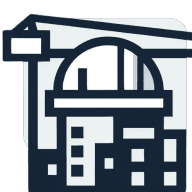4 Construction Technology Trends that Improve Efficiency
The construction industry is experiencing a technological revolution that's reshaping how projects are planned, executed, and managed. From drones to 5D modeling, cutting-edge innovations are boosting efficiency and accuracy across various aspects of construction work. Drawing on insights from industry experts, this article explores four key technological trends that are transforming the landscape of modern construction.
- Drones Revolutionize Construction Inspections and Planning
- 5D Modeling Enhances Complex Infrastructure Projects
- Digital Tools Boost Flooring Installation Accuracy
- LiDAR Scans Accelerate Property Sales
Drones Revolutionize Construction Inspections and Planning
We started using drones for inspections, planning, and project tracking, and it changed how we work.
Traditional inspections meant climbing steep roofs in extreme heat with limited visibility. Now, we deploy drones with high-resolution cameras to scan every angle safely from the ground. This captures detailed visuals in minutes. We get accurate measurements, spot damage fast, and avoid repeat visits. The process is faster, safer, and more precise.
We complete inspections in less time and give clients real timelines and pricing based on what we see. One commercial client in San Antonio needed an assessment on a large metal roof. Before drones, that would have taken the better part of a day. With drones, we finished the scan in under an hour and sent a full report with images the same day. No delays, no guesswork.
This technology also improves planning. With accurate measurements, we order the right materials and minimize waste. That cuts unnecessary costs and reduces the number of trips to haul debris. On larger jobs, this has made our cleanup more efficient and allowed crews to stay focused on the installation.
Drones help us work smarter and safer. You get better data, faster decisions, and tighter execution. If your crew still relies on manual inspection, you're wasting time and exposing them to avoidable risk. Start using tools that give you an edge. We did, and we won't go back.

5D Modeling Enhances Complex Infrastructure Projects
One construction technology I've found incredibly valuable in my projects—especially in complex infrastructure works like electrical substations—is 5D modeling. Over the past 15+ years working in the infrastructure and energy sectors, I've seen how integrating design, schedule, and cost into a single environment can make a genuine difference on the ground.
We used this approach recently on a high-voltage substation project, where design coordination is always a challenge—particularly when civil, structural, electrical, and protection systems all need to come together seamlessly. By working within a 5D model, we were able to visualize the construction sequence in real time and catch clashes early—such as underground conduit routes overlapping with stormwater drainage, or the positioning of cable trenches conflicting with future transformer foundations. These are issues that would have typically shown up late during construction, costing both time and money.
Using tools that support 5D and even 6D or 8D modeling (incorporating safety, operations, and sustainability), we could simulate how the design evolved over time, test changes quickly, and keep stakeholders aligned throughout the process. It wasn't just about "pretty visuals"—it gave the team a much clearer understanding of the project, and it drastically reduced the number of RFIs and last-minute design revisions.
In my experience, it's absolutely worth the investment. It improves collaboration, avoids costly mistakes, and ultimately makes the project safer, more efficient, and more predictable.

Digital Tools Boost Flooring Installation Accuracy
Digital measuring tools and 3D room visualization have revolutionized our installation accuracy and customer confidence. Instead of traditional tape measures, we use laser measuring devices that integrate with design software to show customers exactly how their chosen flooring will look in their space. This technology reduced measurement errors by 90% and virtually eliminated customer surprises about pattern alignment or room transitions. The sustainability impact comes from dramatically reduced waste - precise measurements mean ordering exact quantities rather than over-ordering "just in case." Customers love seeing their future floors digitally before installation, and our installers work more efficiently with precise, technology-verified measurements.

LiDAR Scans Accelerate Property Sales
We sold a property 40% faster by using a 3D virtual tour built with a LiDAR-equipped phone — all without hiring a photographer or setting foot on site again.
At RentMexicoCity.com, we started implementing LiDAR-based 3D scanning via mobile to generate digital twins of our furnished units. What used to take days coordinating photographers and editors now takes under 30 minutes with a phone and AI-based room enhancement. This technology lets us publish highly immersive listings instantly — giving foreign investors and renters an exact feel for the layout, furniture scale, and natural light, even before they land in Mexico.
The benefit? One of our mid-tier furnished listings got a signed lease in under 72 hours from a remote tenant in Germany — no Zoom call needed. More importantly, we've seen:
- 2x higher listing engagement time,
- 30% reduction in physical showings (saving time and emissions),
- and a measurable drop in tenant churn, since expectations match reality.
This trend isn't just technology for technology's sake — it has drastically reduced unnecessary back-and-forth, eliminated the need for energy-intensive virtual staging, and helped us build trust with clients abroad. For a business that thrives on long-term rental satisfaction and reputation, that's gold.


